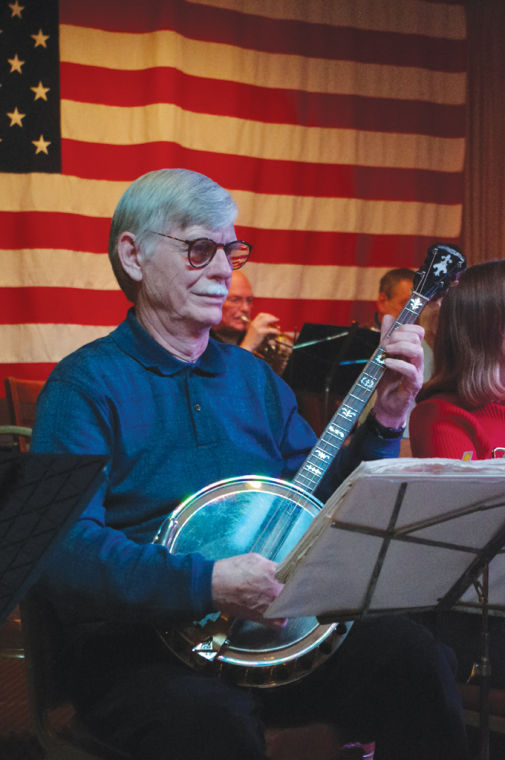Celebration of ‘America’s Instrument’ draws young and old alike
November 11, 2013
In 1976, Frank Rossi joined an organization that had one goal: the preservation of America’s instrument — the banjo.
It is no surprise that Rossi’s very own Pittsburgh Banjo Club shares the same goal, 37 years after Rossi started playing the instrument. But Rossi’s club has been able to do something that most other banjo clubs around the country haven’t: get the youth of the city to come out to rehearsals.
Drawn to the lively sound of the four-string banjo, Rossi took to the instrument immediately. The passion he developed while playing with the Long Island Banjo Society in New York inspired him to start a similar organization when he relocated to Pittsburgh in 1988. The Pittsburgh Banjo Club, however, is far from the typical banjo club you will find in most American cities.
Five or six years ago, young music lovers from Pittsburgh’s up-and-coming neighborhoods discovered that the dining room of Elks Lodge #339 on the North Side was the place to be on Wednesday nights. The sound of dozens of four- and six-string banjos being picked in unison could be heard as you entered the room. The long tables are mostly full, with those in front tapping their feet and singing along, as those in the back enjoy a beer with their friends. On this particular Wednesday night, The World Series played on the television screens at the bar, but the noise from the game was all but drowned out by the performers on stage and the interactive audience. Among the happy faces in the crowd were not only the old — those who would recognize the sounds of a Stephen Foster tune and the work of legendary four-string banjo player Eddie Peabody — but the young, as well.Hip 20-somethings made up a sizable part of the Wednesday night audience.
“There’s banjo clubs like this around the country, but none of them meet in an atmosphere like this. They meet at senior citizen places or church halls, or places not open to the public,” Rossi, of Ambridge, Pa., said. For Rossi, the lively sound of the banjo is what makes it so special. “It’s America’s instrument,” he said, proudly.
The banjo originated hundreds of years ago on the African continent. According to Rossi, African slaves brought the instrument to America during the colonial period. By the early 1800s, some white people were learning to play.
In the Civil War era, some musicians shifted from the old style of playing chords and began fingerpicking the banjo. This was probably influenced by the popular guitar method of the time. Eventually, the banjo spread to the Appalachian region of the U.S. and beyond. When the Roaring ’20s rolled around, young adults began taking to the banjo.
“Colleges before the 1920s, 1930s, always had glee clubs. They also had banjo clubs and mandolin clubs. A lot of old-time doctors and other old-timers play the banjo, because they played it while they were in college,” Rossi said.
The Pittsburgh Banjo Club is not just a bunch of old-timers, however. The ages of club members range from 13 to 95. Rossi and his contingent of banjo, trumpet, tuba and bass players delight audiences with Tin Pan Alley folk tunes, Americana, Dixieland and polka melodies.
“Frank [Rossi] really makes it unique,” said J.T. Chiodi, president of the Pittsburgh Banjo Club. “It’s rehearsal in the beginning, for a little bit, but Frank really runs it like a show.”
For Chiodi, the Pittsburgh Banjo Club has become a family affair. His two sons started singing onstage with the club at ages 3 and 4.
In addition to rehearsals every Wednesday, the club does about 30 performances each year in the Pittsburgh area. The club has played at Kennywood Park, art shows, antique shows and community centers. Prior to practicing at the Elks Lodge, the Pittsburgh Banjo Club met at the James Street Tavern on the North Shore (now the James Street Gastropub and Speakeasy) for 13 years.
Rossi is most fond of the club’s current location, however. “We love this place because it’s air-conditioned [and has] very few steps,” Rossi said. “It’s a great venue for us because it attracts everybody.”
Whether the injection of youth into the club was caused by the popularization of the banjo by folk-pop bands, such as the Avett Brothers and Mumford and Sons, or the atmosphere at the Elks Lodge is hard to tell. Regardless, the young intermingle with the old in a remarkable way at banjo club rehearsals.
“What I like about this is it’s very authentic. Especially for my generation, irony is sort of the hip thing, and this is the opposite of ironic. People are here because they want to hear good music. They want to have a good time. It’s just a very genuine atmosphere,” said Lauren Knapp, a 29-year-old freelance writer who recently moved to Pittsburgh.
“It’s multigenerational,” said Matt Pickart, 28. “I live in Lawrenceville and the hipsters are all over it. [In Lawrenceville] it’s a thing, you gotta go to banjo night.”
Word of the club has spread through what is considered a relatively “un-hip” medium these days: word of mouth. But.
Rossi isn’t surprised of the club’s newfound popularity. Ultimately, it’s the music that draws in the crowds.
“They love the music, they’ve never heard it before. This is happy, lively music, and they’re beginning to really like it,” said Rossi.



